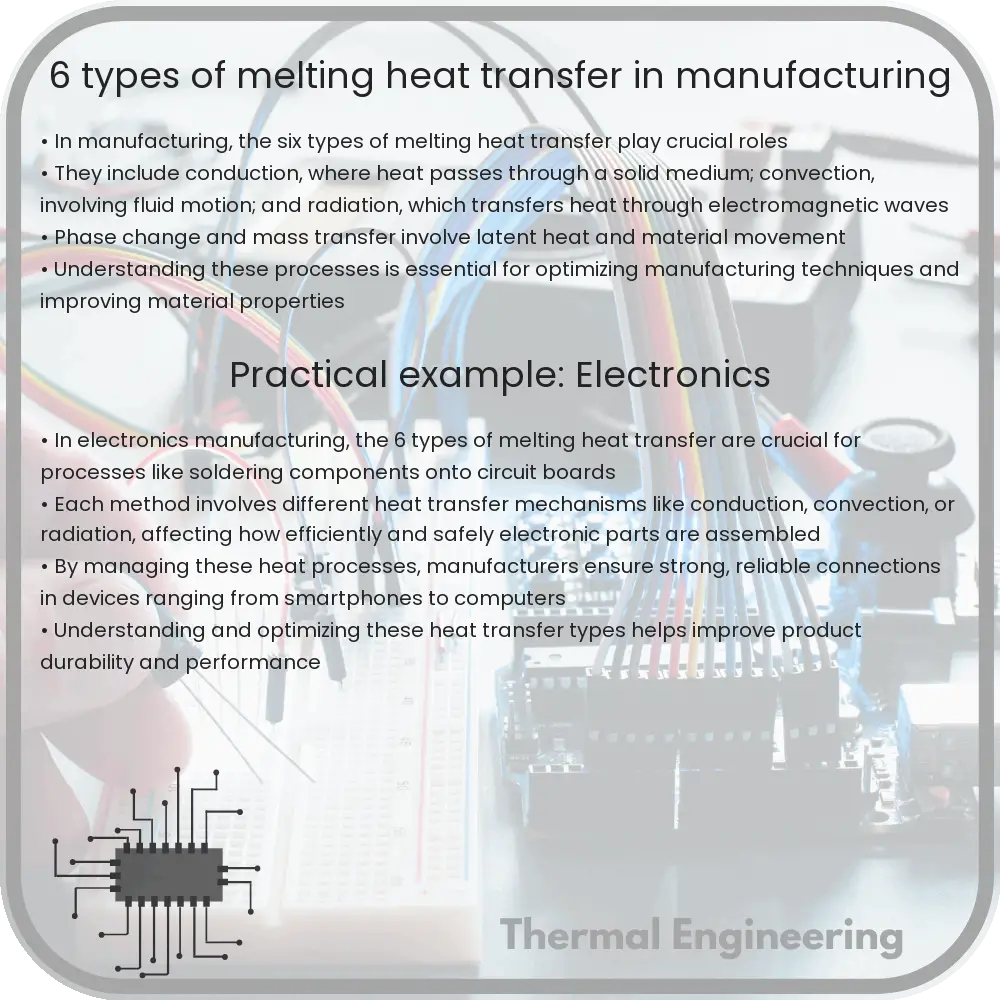Explore the different types of melting heat transfer techniques used in manufacturing, including conduction, convection, radiation, induction, dielectric, and microwave melting processes.

Understanding Heat Transfer in Manufacturing: 6 Types of Melting Processes
Heat transfer plays a crucial role in manufacturing, particularly in processes involving melting. This transformation is fundamental in shaping materials into desired forms or properties. Here, we explore six prominent types of melting heat transfer techniques commonly used in manufacturing settings.
1. Conduction Melting
Conduction melting occurs when heat is transferred through direct contact between materials. One material, typically solid, is heated and transfers its heat to another, leading to melting. This method is highly efficient in scenarios where materials are in close proximity and heat can be steadily maintained over time.
- Applications: Metal casting, soldering, and welding.
2. Convection Melting
Convection melting involves the transfer of heat through a fluid medium, which could be either liquid or gas. This method is essential when the material to be melted is surrounded by a fluid being heated, causing the material itself to melt due to the fluid’s increased temperature.
- Applications: Glass making, and melting of metals in furnaces where the heat source is indirect.
3. Radiation Melting
Radiation involves heat transfer through electromagnetic waves without involving physical contact or an intervening medium. Materials absorb this radiated energy and increase in temperature, leading to melting.
- Applications: Steel manufacturing and in processes where materials are sensitive to contamination from direct contact.
4. Induction Melting
Induction melting uses electromagnetic induction to produce heat within the material itself. An alternating magnetic field induces currents in the material, generating internal heat and causing the material to melt.
- Applications: Precision melting of metals like silver, gold, and steel in controlled environments.
5. Dielectric Melting
Dielectric melting is utilized primarily with insulating materials, where an electric field causes internal heating because of dielectric losses. This approach is specific to materials that can polarize under an electric field.
- Applications: Melting of specific thermoplastics and other polymers.
6. Microwave Melting
Microwave melting is similar to dielectric melting but specifically employs microwave radiation to heat up materials. Microwaves cause polar molecules in the material to vibrate and generate heat, which in turn melts the material.
- Applications: Processing of ceramics, glass, and various composite materials.
Each of these melting heat transfer methods has its own set of applications, advantages, and considerations. By understanding these mechanisms, engineers can choose the most effective technique based on the material properties and the desired outcome of the manufacturing process.